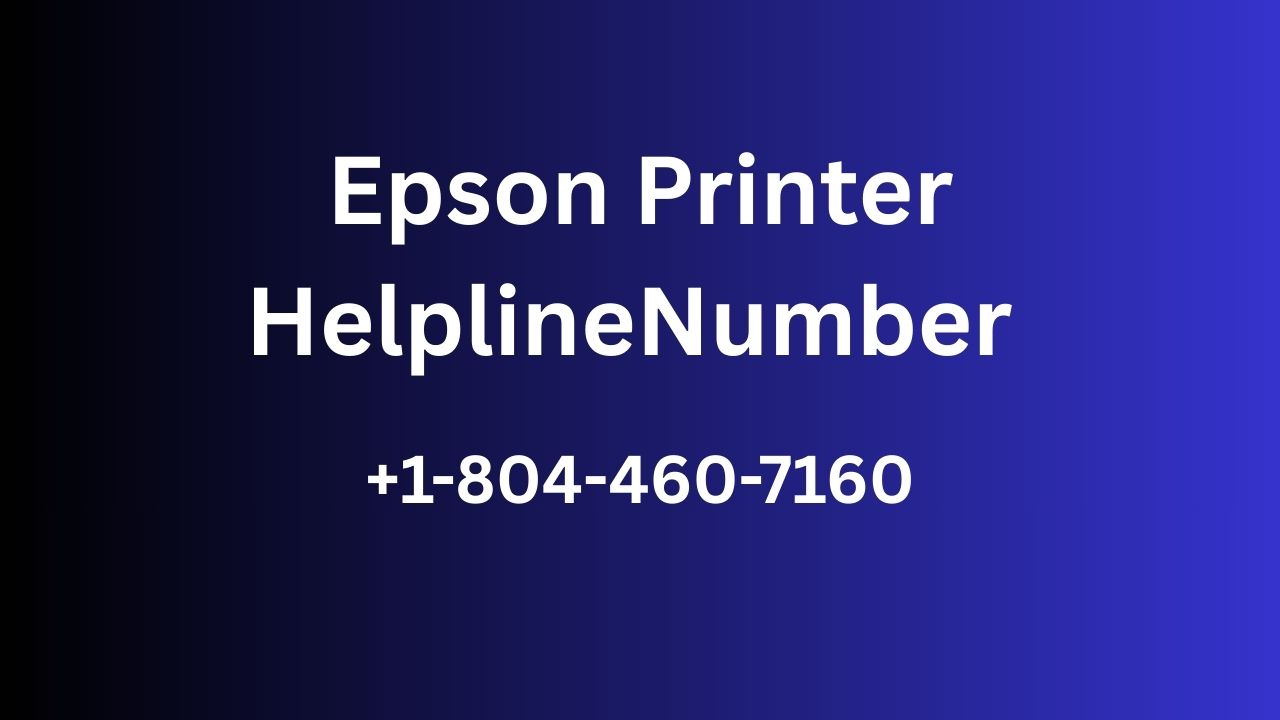How Do I Connect My Epson Printer to My Computer – Complete GuideUpdated 24 days ago

Epson printers are widely used for their reliability, advanced features, and high-quality printing. Whether you are setting up a new printer for the first time or reconnecting your Epson printer after reinstalling your system, knowing how to connect it properly to your computer is essential. The connection process is simple, but it may vary slightly depending on whether you are using a USB cable or a wireless (Wi-Fi) setup. In this guide, we’ll walk you through different methods to connect your Epson printer to your computer in easy-to-follow steps.
Epson Printer Helpline: +1-804-460-7160
Epson Printer Helpline Number: +1-804-460-7160
Epson Customer Service Number: +1-804-460-7160
Epson Printer Customer Service Number: +1-804-460-7160
Understanding the Connection Options
Before starting, you should know the two main ways to connect your Epson printer:
USB Cable Connection – The traditional method that allows direct connection between the printer and the computer. It’s fast and reliable but requires the devices to be physically close.
Wireless (Wi-Fi) Connection – A modern and flexible option that lets you connect your Epson printer to the computer over a Wi-Fi network. It eliminates the need for cables and allows printing from multiple devices.
Wi-Fi Direct – Some Epson printers also support Wi-Fi Direct, which allows the printer to connect directly to your computer without a router.
Depending on your preferences and setup, you can choose the most suitable method.
Method 1: Connecting Epson Printer via USB Cable
If you prefer a simple and direct connection, USB is the best option. Here’s how:
Step 1: Unpack and Prepare the Printer
Place your Epson printer on a stable surface.
Make sure it is connected to a power source and turned on.
Step 2: Connect the USB Cable
Use the USB cable that came with your printer.
Insert one end into the printer’s USB port and the other end into your computer’s USB port.
Step 3: Install the Printer Drivers
Most modern operating systems (Windows and macOS) automatically detect the printer and install the required drivers.
If your computer doesn’t install them automatically, you may need to download the drivers from Epson’s official support page.
Step 4: Verify the Connection
On Windows, go to Control Panel > Devices and Printers to check if the printer is listed.
On macOS, open System Preferences > Printers & Scanners to confirm the connection.
Once detected, your printer should be ready to use.
Method 2: Connecting Epson Printer to Computer via Wi-Fi
If you want more flexibility, you can connect your Epson printer wirelessly. This allows you to print without the hassle of cables.
Step 1: Prepare the Network
Ensure your Wi-Fi network is working properly.
Note down the Wi-Fi network name (SSID) and password.
Step 2: Enable Wi-Fi on the Printer
Most Epson printers have a Wi-Fi Setup option in the control panel.
Navigate to Settings > Network Setup > Wireless LAN Setup.
Choose your Wi-Fi network and enter the password.
Step 3: Connect from Your Computer
On Windows, go to Settings > Devices > Printers & Scanners > Add a Printer.
Your Epson printer should appear in the list. Select it and follow the on-screen instructions.
On macOS, go to System Preferences > Printers & Scanners > Add Printer. Select your Epson printer and connect.
Step 4: Test the Connection
Print a test page to ensure your computer and Epson printer are communicating correctly.
Method 3: Using Wi-Fi Direct
If you don’t have a Wi-Fi router or want to connect directly, Wi-Fi Direct is a great option.
Step 1: Enable Wi-Fi Direct on the Printer
Go to Network Settings > Wi-Fi Direct Setup on your Epson printer.
A unique network name (SSID) and password will be displayed.
Step 2: Connect Your Computer
On your computer, go to Wi-Fi settings and select the printer’s SSID.
Enter the password shown on the printer screen.
Step 3: Install the Printer
Once connected, add the printer using the Printers & Scanners option on your computer.
Now your computer is directly linked to the printer without requiring a router.
Troubleshooting Common Connection Issues
Even after following the steps, you might face some issues. Here are quick fixes:
Printer Not Detected: Ensure the printer is powered on and connected to the same network as your computer.
Driver Issues: If your printer doesn’t work, reinstall or update the drivers.
Wi-Fi Problems: Restart your router and printer. Sometimes refreshing the network connection solves the issue.
Slow Printing: Ensure your Wi-Fi signal is strong. A weak signal can cause delays.
USB Not Working: Try a different USB port or cable to rule out hardware issues.
Tips for a Smooth Setup
Keep your printer’s firmware updated for the latest features and compatibility.
Always use the official Epson driver package for best performance.
If using Wi-Fi, place the printer close to the router to avoid connectivity drops.
For office use, a wireless setup is better as multiple users can connect to the same printer.
Final Thoughts
Connecting your Epson printer to your computer is straightforward, whether you use a USB cable, Wi-Fi, or Wi-Fi Direct. A wired connection is quick and reliable, while a wireless setup gives you more flexibility and convenience. By following the methods above, you can get your Epson printer up and running in just a few minutes.
Once connected, you’ll be able to enjoy seamless printing, scanning, and other features that Epson printers are known for.